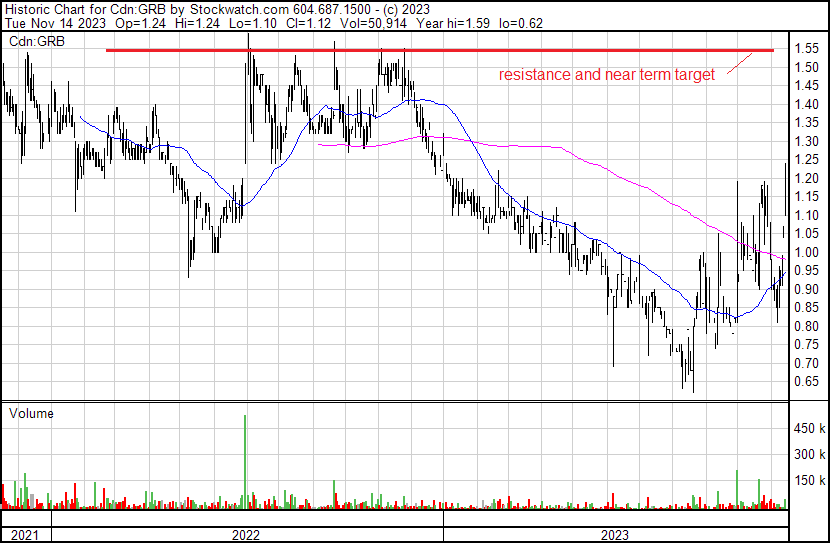Streetwise Reports (9/13/23)
As the newer generation becomes homebuyers, lenders are seeing a major push for non-traditional lending options. Read to see how Rocket Companies Inc., Loan Depot, and Beeline Loans are disrupting the industry with online applications and artificial intelligence and why they should be on investors’ radars.
Owning a home is a huge part of the American Dream and the first step for some to solidify their place in adulthood. In fact, a survey by Bankrate found that “owning a home is still very much a part of the “American Dream,” as cited by 74% of U.S. adults. This is more than those who point to being able to retire (66%), having a successful career (60%), owning a car, truck, or other automobile (50%), having children (40%), and getting a college degree (35%).”
Still, most Americans are unable to buy a house outright, making mortgages a key part of achieving this height of American success.
Rising Interest Rates
In an August 5 article, Market Watch personal finance reporter Aarthi Swaminathan pointed out that The United States is at a ‘critical stage’ regarding mortgages.
The report noted that “if the economy continues to show signs of strength, and the U.S. Federal Reserve hikes its benchmark interest rate once again, rates could go up to 8%.”
Legendary investor Barbara Corcoran told Yahoo Finance that “Now is a great time to buy a home” despite rising interest rates.
However, the article also stressed that the economy is currently hinting at a possible cool-down and that the “rate of inflation is easing.” Swaminathan wrote, “That could lead to a slowdown — or even drop — in mortgage rates.” This is not promised, but something homebuyers and investor should keep their eye on.
Still, while some people may be waiting for interest rates to go down before they start their home search, some experts believe now is actually the time to buy.
Legendary investor Barbara Corcoran spoke with Fox Business about the current state of the market. She said, “The minute those interest rates come down, all hell’s going to break loose, and the prices are going to go through the roof,” she said, commenting that we could see a Covid-like market once again.
With this in mind, Corcoran told Yahoo Finance that “Now is a great time to buy a home” despite rising interest rates.
Homebuyers Looking for a Change
As with most things, mortgages come in two categories: The old and the new. There are the long, held mortgages that have been around for generations, yet they are running into some competition as the new guys usher in a new way to play the game of life.
Some of the long-standing mortgage companies include:
- Wells Fargo & Co. (WFC:NYSE), which announced at the beginning of this year that it intended to scale back mortgages, but last year saw 143,000 loans at a value of US$79 billion.
- Bank of America Corp. (BAC:NYSE), which saw 121,000 loans at a value of US$54 billion.
- JPMorgan Chase & Co (JPM:NYSE), which saw 115,000 loans at a value of US$73 billion, with an average loan amount of US$631,000.
While non-traditional lenders did make gains in 2021, traditional financial institutions won back some ground in 2022, yet some non-bank lenders did manage to hold on to their advantages.
Rocket Companies Inc. was the top mortgage lender in 2022, with 464,000 loans that generated a value of US$127.6 billion.
Loan Depot Inc. had 156,000 loans with a value of US$53 billion.
It seems clear from these results that homebuyers are looking for change in the market. This may be partly due to the younger crowd gaining interest in home buying. 51.5% of millennials are homeowners as of this year.
This generation increased by 7 million homeowners over the last five years, but they are still behind Gen Z, who are becoming homeowners at higher rates than millennials were at the same ages.
Gen Z and Millennial homebuyers are more likely to gravitate toward mobile and online over traditional lenders. According to Chase’s Digital Banking Attitudes Study, over 86% of Gen Z and 89% of millennials conduct their banking through apps. 61% of Gen Z and 71% of millennials use apps to transfer money. Managing money through online means is overwhelmingly popular with younger generations due to its convenience. This is where nontraditional lenders come in.
Top Mortgage Lender Rocket Mortgage
Recently, Rocket Companies Inc. (RKT:NYSE) announced financial results for Q223. In Q223, Rocket reported net revenue of US$1.236 billion and adjusted revenue of US$1.002 billion. This exceeded the high end of the company’s guidance range.
In light of this news, Rocket’s Interim CEO, Bill Emerson, said, “Rocket‘s performance in the second quarter demonstrates the strength of our business and our commitment to delivering superior client service through innovation.”
Digital Platform Makes Rocket #1
In July, Rocket ranked number one in the U.S. for Client Satisfaction in Mortgage Servicing by J.D. Power for the ninth time. According to the release, this accolade was given based entirely on client feedback from an independent research firm.
With this, Executive Vice President of Servicing at Rocket Mortgage LaQuanda Sain said, “Many homebuyers don’t think twice about who will service their mortgage when they apply for a home loan but, with a mortgage lasting as many as 30 years, their servicer can make a huge difference.”
Rocket also ranked in the following categories:
- Digital Channels
- Easy to do Business With
- Keeps Clients Informed and Educated
- Resolving Problems or Questions
A big part of this ranking was Rocket’s 24/7 online self-serve resources, which aided over 100,000 homeowners in the aftermath of Hurricane Ian.
In July, Rocket ranked number one in the U.S. for Client Satisfaction in Mortgage Servicing by J.D. Power for the ninth time. According to the release, this accolade was given based entirely on client feedback from an independent research firm.
Rocket currently has a 4.5 out of 5 on Nerd Wallet, which noted a pro of the company being a “streamlined online process with document and asset retrieval capabilities, as well as the ability to edit your preapproval letter.”
On July 18, Morningstar Equity Analyst Michael Miller gave Rocket a US$13 Fair Value Estimate, noting, “In our view, Rocket Companies has established a clear competitive advantage in its core mortgage lending operations that should allow it to continue to increase its market share while still maintaining its strong margins and returns on invested capital.”
Then, in an August 4 report, James Faucette of Morgan Stanley rated Rocket as Attractive, saying, “As elevated mortgage rates and low housing inventories continued to weigh on industry-wide Purchase and Refi activity during the quarter, RKT sharpened its focus on expense efficiencies across the company.”
Technical Analyst Clive Maund told Streetwise Reports, “Rocket Companies’ business model accords with the times, which is why its stock is starting to advance out of a large base pattern. The consolidation pattern since early mid-July, which has brought the price back to its rising 50-day moving average, has allowed the earlier overbought condition to unwind, setting it up for renewed advance. It is believed to be forming a small base here just above its 50-day moving average from which it should soon advance, but even if the support at US$10.00 fails, it shouldn’t fall far before reversing back smartly to the upside.”
13 other analysts also cover the company.
| Institutions: 73.5% |
| Retail: 21.06% |
| Management & Insiders: 5.44% |
73.5%
21.1%
5.4%
*Share Structure as of 8/10/2023
Rocket: Ownership and Share Structure
According to Thomson Reuters, 73.50% of the company is held by institutional investors. Fidelity Management & Research Co. has 8.84%, with 11.22 million shares. The Vangaurd Group Inc. has 8.56%, with 10.88 million. Fidelity Investments Canada ULC has 5.77%, with 7.32 million. Caledonia (Private) Investments Pty Ltd. has 4.18%, with 5.30 million. Invesco Advisors Inc. has 3.93%, with 4.99 million, and BlackRock Institutional Trust Companies 3.88%, 4.93 million.
5.44% is with management and insiders. CEO Jay Farner has 4.20%, with 5.33 million shares. Director Matthew Rizik has 0.36%, with 0.45 million. President and COO Robert Walters has 0.26%, with 0.33 million, and CFO Julie Booth has 0.17%, with 0.22 million.
The rest is with retail investors.
Market Watch notes that Rocket has a market cap of US$22.88 billion and 127 million shares outstanding. It trades in the 52-week range between US$5.97 and US$11.68.
Loan Depot
On August 6, Loan Depot Inc. (LDI:NYSE) released financial results for Q223. Revenue was up by 31% from the first quarter of this year, which the company attributes to higher pull-through weighted lock volume and gain on sale margins for the company. Loan Depot noted it “continues to maintain a strong liquidity profile, exiting the quarter with a cash balance of US$719.1 million.”
In this release, CEO Frank Martell noted, ““As we move forward in the second half of 2023, we plan to continue maintaining a strong liquidity position and aggressively reduce our costs. Importantly, we are also investing in critical operating platforms, which we expect will deliver higher levels of automation and operating leverage and position us for additional growth and margin expansion in 2024.”
Analyst John Lafferty of PriceTarget Research gave Loan Depot an A rating (the highest given by the research company). Lafferty wrote that the stock was selling well beyond its value at US$2.21, gave the company a target price of US$7, and commented, “Reflecting future returns on capital that are forecasted to be in line with the cost of capital, LDI is expected to be Value Creation neutral. loanDepot has a current Value Trend Rating of A.”
According to Reuters, 21.93% of Loan Depot shares are held by management and insiders. CIO and Head Economist Jeff DerGuarahian has 7.73%, with 6.10 million shares. President Jeff Walsh has 5.30%, with 4.24 million, and Managing Director of Operations and Servicing Dan Binowitz has 1.01%, with 0.80 million.
29.63% is with institutional investors. Cannell Capital LLC has 5.73%, with 4.52 million shares. The Vangaurd Group Inc. has 5.47%, with 4.31 million. Parthenon Capital Partners has 5.11%, with 4.03 million. Brandywine Global Investment Management has 4.49%, with 3.54 million, and Knightsbridge Wealth Management has 3.33%, with 2.63 million.
The rest is in retail.
Market Watch notes that Loan Depot has a market cap of US$639.89 million and 78.89 shares outstanding. It trades in the 52-week range between US$1.2500 and US$3.0200.
New Kid on the Block: Beeline Loans
While public non-traditional lenders have been making waves, there is a private company rising in the industry, Beeline Loans Inc.
Beeline Loans, Inc. launched a proprietary front-end mortgage platform in June 2020 and closed approximately 2,000 loans by the end of 2021. For 2024, the company expects to close about 3,000 loans. Despite the timing of their launch, which included Covid-19, the highest percentage increase in rates in 25 years, war in Ukraine, and housing inventories and consumer confidence being near all-time lows, the company has gained market share against larger legacy lenders.
“While other mortgage lenders have been slumping, Beeline is gaining traction,” wrote Guy Bennett in an article for Yahoo Finance.
Beeline is also not stuck with just one type of loan offering. The company provides FHA and VA, while also providing popular Non-QM loans such as Debt Service Coverage Ratio (DSCR), bank statements, bridge, and fix-n-flip loans.
Bennett noted that “Beeline’s mix of home investors is about 300% higher than the national average.” However, this is not the only thing that sets Beeline apart from other online mortgage companies.
Chris Connelly, a Managing Director at Ellington Financial Group (a shareholder in the company), said,” Because of their very diverse set of product offerings, younger home buyers have more options at Beeline vs. traditional mortgage lenders and a better chance to get financing for a new home.”
On April 13, 2013, Robinhood revolutionized the stock-buying industry by fractionalizing stocks. This allowed people who previously were excluded from the stock market into the industry and paved the way for younger generations to get involved. Beeline is now doing for mortgages what Robinhood did for the stock market.
Beeline stands out from the crowd because it has incorporated artificial intelligence into its services with its chatbot, Bob. This addresses the needs of a rapidly emerging demographic who demand a digital process and real-time certainty.
On June 1, the company rolled out improvements to the AI system so that it is able to answer complex queries and give detailed quotes at all hours.
“Bob never sleeps,” the company noted, “he’s busy answering surprisingly complicated questions about Beeline’s wide range of conventional and non-QM products with great speed and accuracy, even at 2 a.m. He then poses highly personalized product-specific questions to generate a quote in real-time.
Chris Connelly, a Managing Director at Ellington Financial Group (a shareholder in the company), said,” Because of their very diverse set of product offerings, younger home buyers have more options at Beeline vs. traditional mortgage lenders and a better chance to get financing for a new home.”
Beeline is a private company with over US$40 million currently invested. The largest shareholder is founder Nick Liuzza, who has over US$10 million invested in Beeline. Cavalry Investment Fund, Ellington, and Atalaya are all significant investors.
Important Disclosures:
- Beeline has a consulting relationship with an affiliate of Streetwise Reports, and pays a monthly consulting fee between US$8,000 and US$20,000.
- As of the date of this article, officers and/or employees of Streetwise Reports LLC (including members of their household) own securities of Beeline.
- Amanda Duvall and Katherine DeGilio wrote this article for Streetwise Reports LLC and provides services to Streetwise Reports as an employee.
- The article does not constitute investment advice. Each reader is encouraged to consult with his or her individual financial professional. By opening this page, each reader accepts and agrees to Streetwise Reports’ terms of use and full legal disclaimer. This article is not a solicitation for investment. Streetwise Reports does not render general or specific investment advice and the information on Streetwise Reports should not be considered a recommendation to buy or sell any security. Streetwise Reports does not endorse or recommend the business, products, services or securities of any company mentioned on Streetwise Reports.
For additional disclosures, please click here.

 ‘
‘





